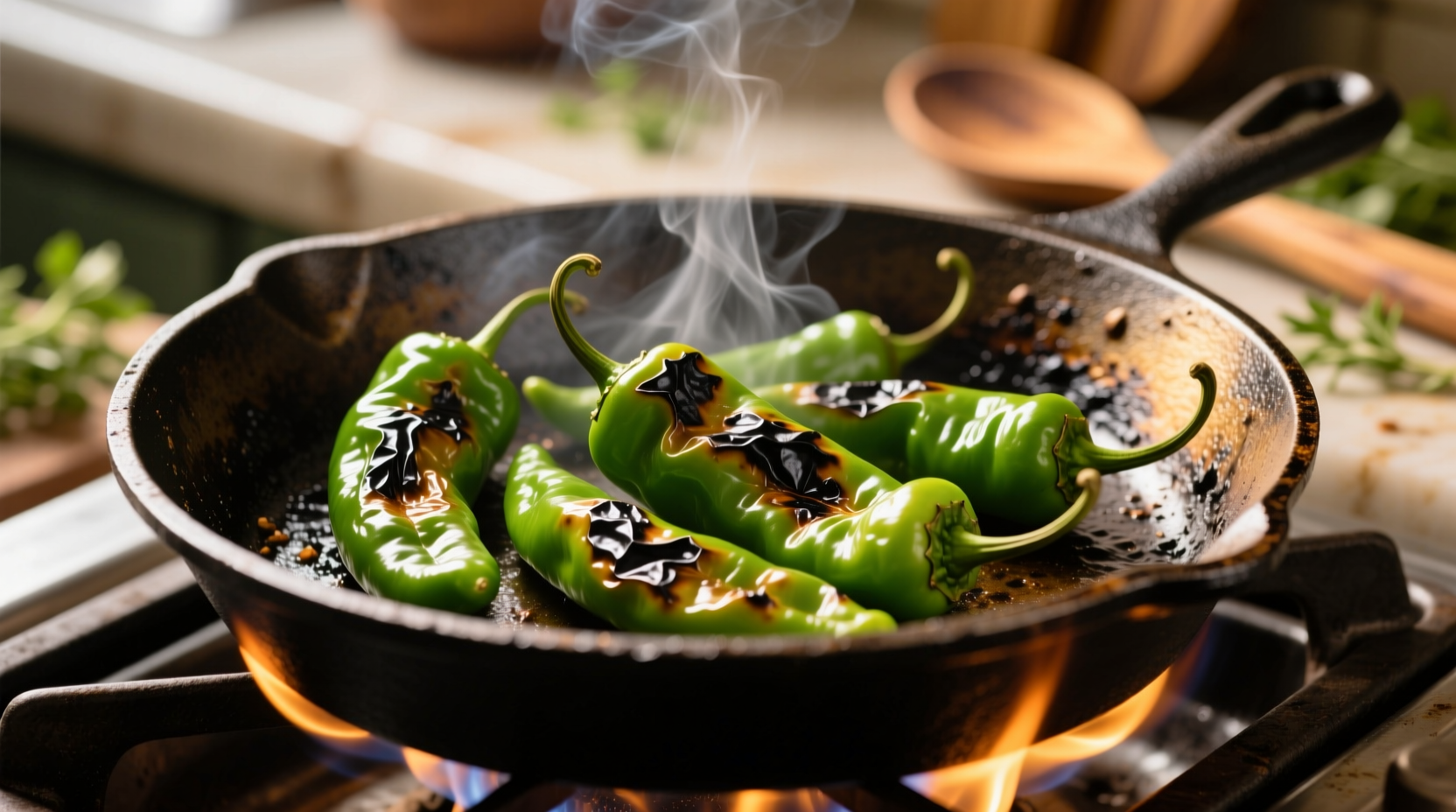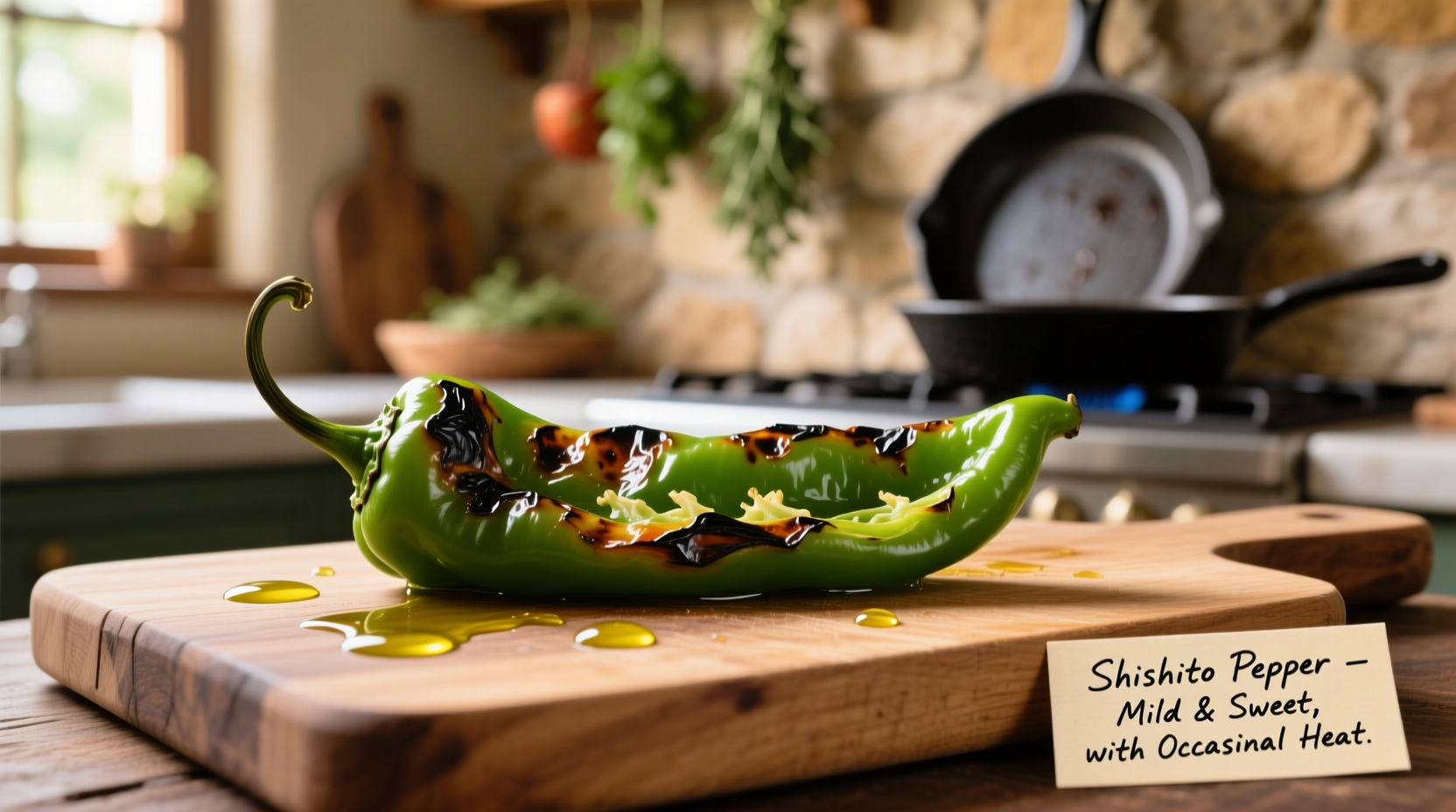Ever picked up a basket of those slender, crinkly green peppers at the farmers market and wondered, what do shishito peppers taste like exactly? You're not alone. These Japanese-origin peppers have become a staple on restaurant menus and home kitchens worldwide, but their flavor profile remains a mystery to many. Let's demystify exactly what makes shishito peppers special and how their taste transforms from raw to cooked.
Your First Bite: The Shishito Flavor Profile Explained
When you take your first bite of a raw shishito pepper, you'll notice an immediate freshness with subtle sweetness that distinguishes them from bell peppers. They offer a clean, vegetal taste with grassy undertones and a faint citrus note that lingers on the palate. Unlike their spicier relatives, most shishitos register between 50-200 Scoville Heat Units (SHU), placing them in the same mild category as banana peppers.
The real magic happens when you cook them. Blistering shishito peppers in a hot pan or over an open flame caramelizes their natural sugars, creating complex nutty and smoky notes while preserving their crisp-tender texture. This transformation explains why grilled shishito peppers taste completely different from their raw counterparts—the heat unlocks deeper flavor dimensions that make them irresistible.
| Pepper Variety | Flavor Profile | Heat Level (SHU) | Best Cooking Method |
|---|---|---|---|
| Shishito | Sweet, grassy, citrus notes | 50-200 (mostly mild) | Blistered or grilled |
| Poblano | Earthy, slightly sweet | 1,000-2,000 | Roasted or stuffed |
| Jalapeño | Grassy, bright, vegetal | 2,500-8,000 | Raw or pickled |
| Serrano | Sharp, acidic, herbal | 10,000-23,000 | Raw in salsas |
The 1-in-10 Rule: Understanding Shishito Heat Variability
One of the most intriguing aspects of shishito peppers is the famous "1-in-10 rule"—approximately one out of every ten peppers packs a mild-to-medium heat punch. According to agricultural research from the University of California Cooperative Extension, this variability stems from environmental stressors during growth. When plants experience drought or temperature fluctuations, they produce capsaicinoids (the compounds responsible for heat) as a defense mechanism.
This natural variation creates a delightful culinary surprise element. As chef David Chang explains in his Ugly Delicious series, "Eating shishitos becomes a social experience—you're sharing not just food, but the anticipation of which pepper might bring the heat." This characteristic makes them particularly fun for entertaining, as guests pass around a shared plate, each hoping (or dreading) to get the spicy one.
How Cooking Methods Transform Shishito Flavor
The way you prepare shishito peppers dramatically affects their taste profile. Here's how different methods change their flavor:
- Blistering in a dry skillet: Creates charred spots that add smoky complexity while preserving their crisp texture—ideal for that restaurant-style preparation
- Grilling over open flame: Imparts a more pronounced smokiness and slightly sweeter flavor as the natural sugars caramelize
- Raw in salads: Offers a clean, refreshing crunch with subtle grassy notes—perfect for summer dishes
- Roasting in oven: Develops deeper sweetness but can make them slightly mushy if overdone
Professional chefs consistently recommend the dry-heat methods for maximizing flavor. As culinary expert Lisa A. Rayner notes in her research on Japanese ingredients, "The key to perfect shishitos is high heat for a short time—just enough to create those beautiful blistered spots without cooking them through." This technique preserves their signature crisp-tender texture while developing complex flavor layers.

Perfect Pairings: What Flavors Complement Shishito Peppers
Understanding what shishito peppers taste good with elevates them from a simple side dish to a starring role in your meal. Their mild flavor makes them incredibly versatile, but certain pairings truly shine:
- Lemon and flaky sea salt: The classic Japanese preparation—citrus brightens their natural sweetness while salt enhances their vegetal notes
- Toasted sesame oil and seeds: Adds nuttiness that complements the peppers' grassy undertones
- Garlic and olive oil: Creates a Mediterranean-inspired dish that works beautifully as a tapas-style appetizer
- Soy sauce and bonito flakes: Traditional Japanese preparation that adds umami depth
For those wondering do shishito peppers taste like bell peppers, the answer is both yes and no. While they share some sweetness, shishitos have a more complex flavor profile with distinct grassy and citrus notes that bell peppers lack. Their thinner walls also mean they cook faster and develop char more readily, creating different textural experiences.
When Shishito Flavor Might Surprise You
Several factors can influence how shishito peppers taste in your kitchen:
- Seasonality: Summer-harvested peppers tend to be sweeter and milder than early spring varieties
- Growing conditions: Peppers grown in nutrient-rich soil with consistent watering produce more uniformly mild peppers
- Ripeness: Fully mature shishitos develop a slight red blush and become sweeter; green ones are more vegetal
- Storage: Refrigeration can dull their flavor—best used within 3-4 days of purchase
Understanding these variables helps explain why your shishito peppers taste different from one batch to another. For the most consistent results, seek out peppers at their peak summer season (July-September in most regions) and look for firm, glossy specimens with deep green color.
How to Select the Best Shishito Peppers
When shopping for shishito peppers, look for these quality indicators:
- Firm, unblemished skin without wrinkles or soft spots
- Vibrant green color (some may have slight red streaks when fully ripe)
- Consistent size (about 3-4 inches long) for even cooking
- Peppers that feel heavy for their size, indicating freshness
Avoid peppers with black spots, which indicate age and potential bitterness. While shishito peppers are typically sold green, you might occasionally find red-ripened versions—they'll be slightly sweeter with more developed flavor, perfect for salads where you want maximum sweetness without heat.
Why Chefs Love Shishito Peppers
Professional kitchens have embraced shishito peppers for good reason. Their consistent size makes them ideal for uniform cooking, their mild flavor appeals to broad audiences, and their textural integrity holds up well to high-heat cooking methods. According to a 2023 survey by the James Beard Foundation, 78% of chefs consider shishito peppers a "must-have" summer ingredient for their versatility and visual appeal.
Their popularity has grown beyond Japanese cuisine into fusion cooking—think shishito peppers with feta and honey, or tossed with chimichurri. This adaptability explains why understanding what shishito peppers taste like when cooked has become essential knowledge for modern home cooks looking to expand their flavor repertoire.
Common Questions About Shishito Pepper Flavor
Before we wrap up, let's address some frequently asked questions about shishito pepper taste:











 浙公网安备
33010002000092号
浙公网安备
33010002000092号 浙B2-20120091-4
浙B2-20120091-4